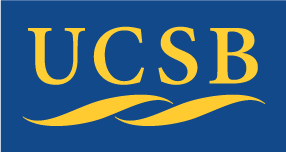|
Geometry, Topology, and Physics Seminar, Fall 2007
Organizers:
Andreas Malmendier
and Dave Morrison.
Meets 4:00 - 5:30 p.m. Fridays in South Hall 6635.
Various topics relating geometry, topology, and physics.
Other Quarters: [
Fall, 2021;
Winter, 2020;
Fall, 2019;
Spring, 2018;
Winter, 2018;
Fall, 2017;
Spring, 2017;
Wnter, 2017;
Fall, 2016;
Spring, 2016;
Winter, 2016;
Fall, 2015;
Spring, 2015;
Winter, 2014;
Fall, 2013;
Fall, 2012;
Fall, 2011;
Winter, 2011;
Spring, 2010;
Winter, 2010;
Fall, 2009;
Spring, 2009;
Winter, 2009;
Fall, 2008;
Spring, 2008;
Winter, 2008;
Fall, 2007;
Spring, 2007;
Winter, 2007;
Fall, 2006
]
| Sep. 28 |
Fall Welcome BBQ
|
| Oct. 5 |
Andreas Malmendier (UCSB)
We show that the Seiberg-Witten family of elliptic curves defines a four-dimensional, Jacobian rational elliptic surface Z over the u-plane
with boundary whose signature equals minus the number of massive hypermultiplets. The family of the stable semi-classical BPS
states defines a unique flat holomorphic line bundle on Z. We also construct rank-two holomorphic SU(2)/Z_2-bundles
and show that the central charges of the corresponding quantum states are half the charges of the BPS states.
We show that the local anomaly of the determinant line bundle of the ∂-operator along the fiber of Z
vanishes. We determine the non-trivial global anomaly as the holonomy of the determinant section and the relation to the signature of Z.
Moreover, we show that the determinant line bundle extends across the nodal fibers of Z. The extension
introduces current contributions to the curvature of the determinant line bundle at the points in the u-plane where the stable BPS states become massless.
Audio [ mp3,
wma ];
Lecture notes.
|
| Oct. 12 |
Anton Kapustin (Caltech)
Any finite N=2 d=4 gauge theory on a product of two Riemann surfaces C1 and C2 can be twisted into a
holomorphic-topological theory which depends only on the complex structure on C_1 and is invariant
under arbitrary diffeomorphisms of C2. This leads to an interesting connection between 4d gauge
theories and twisted 2d sigma-models.
Audio [ mp3,
wma ];
Lecture
notes.
|
| Oct. 19 |
Nora Ganter (Colby College)
Elliptic cohomology is a field at the intersection of number theory,
algebraic geometry and algebraic topology. Its definition is very
technical and highly homotopy theoretic. While its geometric definition
is still an open question, elliptic cohomology exhibits striking formal
similarities to string theory, and it is strongly expected that a
geometric interpretation will come from there.
To illustrate the interaction between the two fields, I will speak about
my work on orbifold genera and product formulas:
After a very informal introduction to elliptic cohomology, I will
discuss string theory on orbifolds and explain how a formula by
Dijkgraaf, Moore, Verlinde and Verlinde on the orbifold elliptic genus
of symmetric powers of a manifold motivated my work in elliptic
cohomology. I will proceed to explain why elliptic cohomology provides a
good framework for the study of orbifold genera.
Time permitting, I will also sketch conjectural connections to
generalized Moonshine and non-linear sigma models.
Audio [ mp3,
wma ];
Lecture
notes.
|
| Oct. 26 |
Matthew Ando (UIUC)
Recently Jacques Distler and Eric Sharpe introduced "Fibered WZW models" as a generalization of
the heterotic string. The associated elliptic genera have been studied by Kefeng Liu and
myself. I shall explain how these genera fit arise naturally in the context of equivariant
ellitpic cohomology.
Audio [ mp3,
wma ];
Lecture
notes.
|
| Nov. 2 |
Eric D'Hoker (UCLA)
The complete Type IIB supergravity solutions with 16 supersymmetries are obtained on the manifold AdS4 x S2 x S2 x C with
SO(2,3) x SO(3) x SO(3) symmetry in terms of two holomorphic functions on a Riemann surface C, which generally has a boundary. This is achieved by reducing
the BPS equations using the above symmetry requirements, proving that all solutions of the BPS equations solve the full Type IIB supergravity field equations,
mapping the BPS equations onto a new integrable system akin to the Liouville and Sine-Gordon theories, and mapping this integrable system to a linear equation
which can be solved exactly. Amongst the infinite class of solutions, a non-singular Janus solution is identified which provides the AdS/CFT dual of the maximally
supersymmetric Yang-Mills interface theory discovered recently. We outline the construction of general classes of globally non-singular solutions, including fully
back-reacted AdS5 x S5 and supersymmetric Janus doped with D5 and/or NS5 branes.
Audio [ mp3,
wma ];
Lecture
notes.
|
| Nov. 9 |
The Arithmetic and Geometry Seminar will meet at 4 pm.
Paolo Cascini (UCSB)
Rational Points on Algebraic Varieties: Campana's Program II
A classical problem in mathematics is the study of the
rational solutions of a Diophantine problem, i.e. a finite system of
polynomial equations with integral coefficients. In particular, one
might ask when the number of these solutions is infinite. At least
conjecturally, the answer to these questions is closely related to the
geometry of the varieties defined by such polynomials. Campana's
program is a new method to approach these problems. This talk will be
accessible to a general audience and no prior knowledge of the
subjects involved is required.
|
| Nov. 16 |
Sergei Gukov (UCSB)
Audio [ mp3,
wma ];
Lecture
notes.
|
| Nov. 23 |
No meeting: Thanksgiving Holiday
|
| Nov. 30 |
No meeting.
|
| Dec. 7 |
Robert Waelder (UCLA)
The extension of smooth invariants such as Chern numbers and Hodge numbers
to singular varieties has interesting applications in mirror symmetry and
algebraic geometry. Two such invariants of particular interest are the
stringy E-function of Batyrev, and the singular elliptic genus of Borisov
and Libgober. I will discuss these invariants, their limitations, and a
promising generalization for the case of normal algebraic surfaces.
Audio [ mp3,
wma ];
Lecture
notes.
|
|
|



